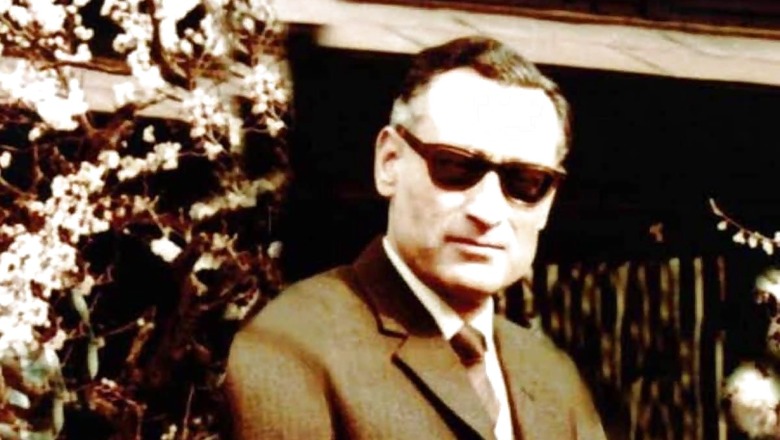
views
True to its name, the book ‘The War That Made Raw’ authored by Anusha Nandakumar and Sandeep Saket, takes us on a voyage through the tumultuous and uncertain times leading up to the Bangladesh Liberation War of 1971, which tested the tenacity of the newly formed R&AW, India’s External Intelligence Agency, and helped put it on the world map as a name to reckon with.
The book sheds light on the work of the brave men who fought in the shadowy realm of intelligence and espionage, an often-neglected subject in Indian non-fiction as first-person accounts are hard to come by.
The authors also narrate the story of Rameshwar Nath Kao, the father of modern Indian espionage, who helped India liberate Bangladesh, and also gives detailed and vivid accounts of several covert operations and off-the-battlefield wars that the R&AW had to win in the past to save the country from foreign threats.
Tracing the history of Indian espionage, the authors show why Kao is such a pivotal figure in R&AW.
“Kao was a visionary who single handedly put Indian intelligence on the world map. It is said that he was a man of few words and someone who preferred to let his work speak for him,” the authors say.
A far cry from the flamboyant James Bond, Kao lived by the maxim: ‘The life of a spy is to know and not be known.’
The narrative style of the book makes it an easy and captivating read. It runs as interestingly as a novel or a film, with many dramatic moments that keep the readers hooked.
Filled with several anecdotes, the book brings history to life with vivid details, and makes unknown individuals seem familiar and real.
For example, the chapter ‘Kaoboys’, which talks about Kao putting together his core team and bringing R&AW to life and building it from scratch, contains several anecdotes of the team members casually joking, which adds life and colour to the story, making spies more human.
Kao’s tales of bravery
At the heart of the storytelling is the handsome, incorruptible, sophisticated and intellectual Kao, shy and humble hero of Indian espionage. The book recounts many tales of his intelligence and bravery.
In one such retelling, Count Alexandre de Marenches — former head of the French External Intelligence Agency, or SDECE (Service For External Documentation And Counter-Intelligence, as it was then known) — names Kao as one of the ‘five great intelligence chiefs of the 1970s’.
“What a fascinating mix of physical and mental elegance! What accomplishments! What friendships! And, yet so shy of talking about himself, his accomplishments and his friends,” the Count’s remarks on Kao.
Kao held the position of secretary (research) in the Cabinet Secretariat of the Government of India, and his first assignment, talked about in the first chapter ‘The Intelligencer’, was the Kashmir Princess probe in 1955, where a chartered Air India plane named ‘Kashmir Princess’ was sabotaged in hopes of assassinating the then Chinese Premier Zhou Enlai, who fortunately did not board the flight.
Kao worked the case so efficiently that to show his appreciation, Enlai awarded Kao with his coveted personal seal, an honour reserved for the most deserving public servants in the Chinese republic.
The second assignment handled by Kao was the setting up of an intelligence agency in Ghana in 1958.
According to the book, “Kao left for Ghana in February 1959. Operating out of Accra, the nation’s capital, he worked there for a year.”
“To begin with, he did not even have an office table, let alone qualified personnel. He had to set everything up from scratch, building up the basic framework and infrastructure of the country’s intelligence apparatus. But the Ghanaians assigned to Kao at Accra were a cheerful lot. They were eager to learn and extremely devoted to Nkrumah and their country,” it adds.
“After a year of dedicated hard work, despite minimal funds and the complete absence of a trained workforce, Kao succeeded in establishing the Foreign Service Research Bureau (FSRB), Ghana’s external and internal intelligence agency. The FSRB was the first foray made by an Indian intelligence officer at a global level.”
The book says Kao saw his “stint in Ghana as an opportunity to use his newly developed methodology and international experience in intelligence and counter-intelligence. This assignment would give him much-valued experience”.
Contribution to 1971 liberation war
The chapter indicates that these two assignments tested Kao’s mettle and grit, and helped mould the man, who would shape the future of intelligence-gathering in India.
Kao took over as the director of R&AW in 1968 after then prime minister Indira Gandhi split the Intelligence Bureau to create an intelligence wing solely dedicated to international and external threats.
His aim was singular: to create an intelligence agency capable of playing at the same level as other foreign intelligence agencies of the leading powers to ensure the safety and security of the nation.
The agency’s efficiency and indomitable spirit came to the spotlight during the Bangladesh Liberation War.
From the training of Bangladeshi freedom fighter group Mukthi Bahini, getting most of Sheikh Mujibur Rahman’s close aides out of the country before the Pakistani Army cracked down on them to gathering and passing crucial intelligence to the departments concerned, R&AW performed splendidly.
The book contains an epigraph from the famous book ‘The Art of War’ by Sun Tsu that says: “The reason the enlightened prince and the wise general conquer the enemy whenever they move and their achievements surpass those of ordinary men, is foreknowledge.”
One cannot imagine a more apt and suitable quote to use as an epigraph for this book. It summarises the entire point of intelligence-gathering in one single line.
It also gives an apt description of the book as it is filled with the exciting story of R&AW, its conception and creation, to it being transformed into a force respected by its counterparts from different countries.
The literary skills of the authors combined with the historical accounts make the book a great read. Its evocative style, narrative quality, and the wonderful, and humble hero at the heart of the story will undoubtedly appeal to the readers.
Read all the Latest News, Breaking News and Coronavirus News here. Follow us on Facebook, Twitter and Telegram.




















Comments
0 comment